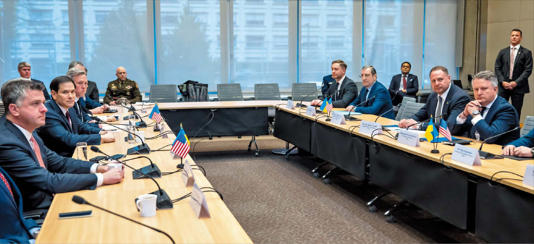
In a major diplomatic development widely described as a US-Ukraine peace deal breakthrough, American and European media outlets reported on the 25th that behind-the-scenes negotiations to end the Russia-Ukraine war have reached significant progress. According to senior U.S. government officials cited by the BBC and CBS, Ukraine has accepted the peace framework proposed by Washington, with only a few technical points left to finalize ahead of an expected meeting between U.S. President Donald Trump and Ukrainian President Volodymyr Zelenskyy.
The latest momentum follows a high-level meeting in Geneva on the 23rd, where U.S. and Ukrainian delegations collaboratively updated a previous 28-article American proposal into a revised 19-article document that better aligns with Kyiv’s demands. Both sides reportedly agreed that Trump and Zelenskyy would take the final step in formalizing the deal.
The encouraging update—now driving headlines under the tag “US-Ukraine peace deal breakthrough”—emerged even as U.S. Army Secretary Dan Driscoll, serving as Trump’s special envoy, continued discreet shuttle diplomacy with Russian negotiators in Abu Dhabi. Driscoll has been in talks with Ukrainian and Russian officials since the previous day, engaging in what sources described as marathon, all-day negotiation sessions.
CBS reported that Driscoll “negotiated with the Russian side all day, entering and exiting the meeting rooms repeatedly,” suggesting a highly fluid and active bargaining environment. Ukrainian defense intelligence chief Kyrylo Budanov also participated in the discussions, signaling Ukraine’s commitment to securing favorable terms.
Ukrainian National Security Advisor Rustem Umerov confirmed the progress, stating on X that both parties had “reached a shared understanding on the core conditions” and revealed that Zelenskyy hopes to visit Washington before the end of November to finalize the agreement directly with Trump.
The revised peace plan appears to address several of the earlier controversies that had drawn criticism for favoring Russia’s demands. Washington and Kyiv have agreed on the following changes:
The previous cap that limited Ukraine’s military to 600,000 troops has now been expanded to 800,000, reflecting Ukraine’s urgent security and defensive needs.
Earlier clauses that suggested broad amnesty for Russian war crimes and provisions for the U.S. to retain half of the profits generated from Russia’s frozen assets were softened or removed entirely.
Perhaps the most sensitive shift is the removal of a clause that would have explicitly recognized Russia’s claim over all territories in Donbas seized after its full-scale invasion. That demand has been deleted, signaling a major concession toward Ukraine’s territorial integrity.
Another major adjustment concerns Ukraine’s long-standing ambition to join NATO. Instead of permanently prohibiting NATO membership, the new plan now simply states:
“The decision on NATO membership should be made by Ukraine itself.”
According to Ukrainian Deputy Foreign Minister Serhiy Kyslytsya, “Almost nothing remains the same” from the original 28-article version, as many clauses were “eased or redesigned to reflect Ukraine’s position.”
Zelenskyy also confirmed in a late-night address that the peace document had undergone serious restructuring, stressing that particularly sensitive matters—such as territorial boundaries and future NATO engagements—would be discussed directly with Trump.